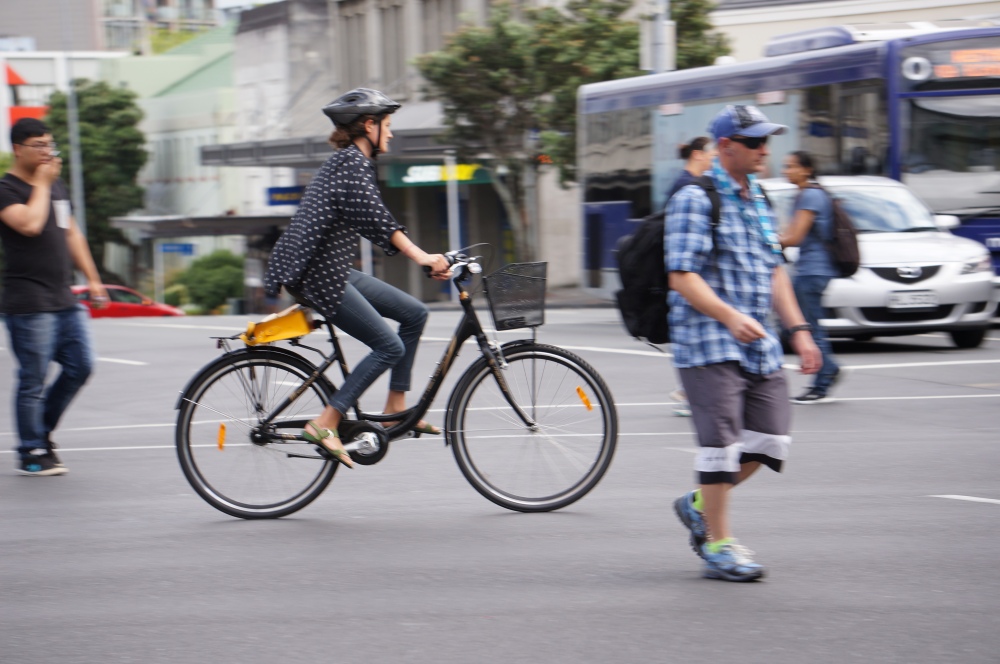Riding a bicycle is easy. It’s an extension of walking and it’s a perfect transport tool for short journeys. But the potential of the bicycle to play a bigger role in the transport landscape is being stymied by government policies that give priority to driving.
The average number of bikes used daily in the city rose from just over 6,000 to more than 70,000.
Our cities are too full of fast moving cars and motorists that have an insatiable sense of entitlement. It will be impossible for the bicycle to flourish while this remains unchanged. In order to get more people riding bicycles as a form of transport, the environment needs to be the focus of our attention. It needs to be made much better. Providing good quality infrastructure is one assured way of getting people to use bicycles for transport purposes.
We have Seville to validate that claim. When connected and safe bicycle lanes were built in Seville, there was a dramatic increase in the number of people cycling on those routes – the number of bike trips multiplied 11-fold in a few years. The average number of bikes used daily, in the city, rose from just over 6,000 to more than 70,000. The latest count found 6% of all trips were made by bike.
But it’s how that infrastructure got built in the first place that also needs to be examined. There appears to be a large element of fortuity surrounding the construction of these bicycle lanes. That they were constructed without significant opposition and before the opposition could act against them even surprised the advocates.
The Seville experience is useful in that it enhances the ‘build it and they will come’ adage but it does nothing to explain how the cycle lanes got to be built in the first place.
The questions that need to be asked of Seville now are;
- can this bicycle network be grown and developed further?
- can it also be emulated in other Spanish cities?
Finding answers to these questions is important because experience tells us that your average motorist doesn’t take too kindly to any requests to relinquish highly contested street space. The biggest barrier to building cycle lanes in a typical urban environment is the requirement of motorists being willing to cede territory. People on bicycles belong on the street. They want to be able to access shops, restaurants, schools and work places. But in the current set up, they play second fiddle to people in cars. Some cities are trying to buy their way out of the problem with all sorts of crazy non-solutions. It’s like wanting to have your cake and eating it too.
The road design that is currently offered to us, provides space for moving cars, parking cars and for pedestrians. When a separated space for cycling doesn’t exist, cycling is treated like all other motorised vehicles. This scenario explains why the people who do cycle in these conditions tend to ride and dress for the occasion…like warriors going into battle.
The Seville experience is useful in that it enhances the ‘build it and they will come’ adage but it does nothing to explain how the cycle lanes got to be built in the first place. I’m inclined to think of it in terms of an aberration. Where was the backlash and the resistance? Seville just makes it all look too easy.
The enormous positive benefits of urban cycling are unequivocal. There are a few cities that have already embraced urban cycling. They provide us with fully functional models to emulate. But we are going to have to dig deeper if we are to find the necessary tools for persuading a larger number of the population to support urban cycling; to convince motorists to cede some territory or politicians to reverse decades of harmful transport and land use policies.
There are many benefits of having a cyclised city. And these benefits of wealth and well-being are enjoyed by the community at large. These benefits need to be sold to a sceptical public.
When the (already strong) urban cycling culture in The Netherlands was threatened by a motoring tsunami, cycling advocates engaged in some heavy duty campaigning. Whole communities rallied to ensure that culture was retained. There were protests. They employed a strongly worded campaign called ‘Stop the Child Murder’. Cycle lanes are built on THAT kind of support.
There are many benefits of having a cyclised city. And these benefits of wealth and well-being are enjoyed by the community at large. These benefits need to be sold to a sceptical public. Campaigns for separate cycle paths need to be presented as bringing benefits to everyone and not just to a special interest group. A wider public audience needs to be engaged.
That’s why it’s important to make cycling look normal and appealing. The process of making cycling appeal to a wide audience needs to be viewed as a specific goal and therefore, specific strategies need to be employed to make it happen. So step aside cycling enthusiasts, it’s time to call in the marketing experts. Dare I suggest, look to big tobacco and big motoring for inspiration.
By all means, celebrate the success in Seville. But also see the real task at hand. It will take more than polite requests to convince the current breed of mainstream politicians that cycle lanes need to be built. At the present time, a vote for cycling equates to an act of political suicide. The building of cycle lanes may be the prize but all focus should now be on building political will. Achieving that task will require a completely different skill set. Being able to ride a bicycle may not even be one of the required skills.
‘Cycling’ is sport and recreation. ‘Riding a bicycle’ is everyday activity. No sweat.
Get involved via: Twitter, Facebook, Flickr, Vine or Instagram.
